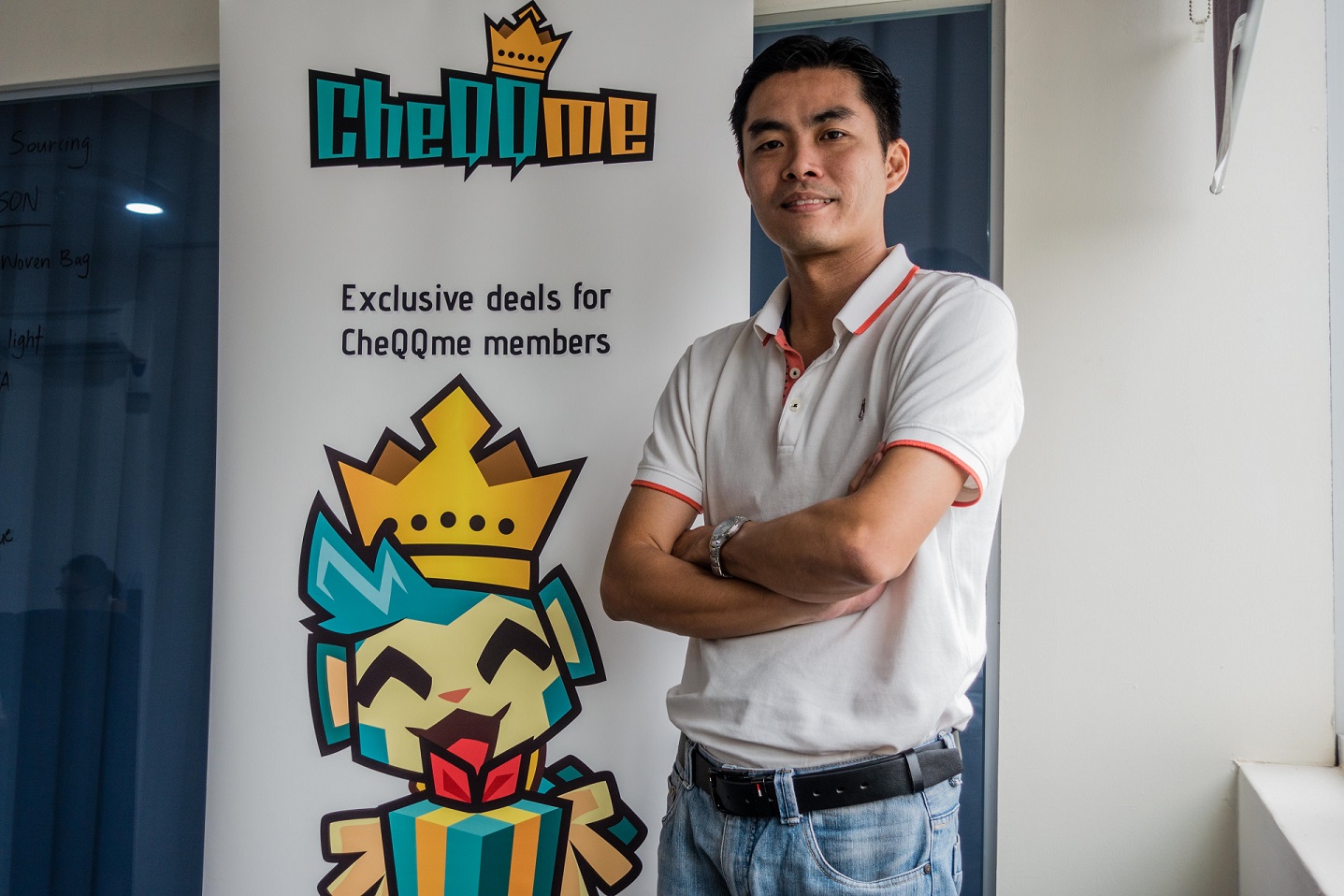CheQQme makes the case for gamification in mobile marketing
By Chong Jinn Xiung September 16, 2017
- Sees gamification as a more fun and effective way to attract customers as opposed to slashing prices
- Has plans to expand to Indonesia and China in the next two months

IN TODAY’S challenging retail environment it can be especially difficult to attract and engage with customers. It is this clashing of offline and online worlds that presents an opportunity that Malaysian-grown gamified mobile marketing platform CheQQme hopes to bridge.
“The idea behind CheQQme when we started in April 2016 was to bring both online users and offline merchants together via an app,” explained its founder Lee Wei Chee (pics).
“We recognised that brick and mortar businesses need online exposure but at the same time they also want the customer to walk into their physical stores.”
Available on both iOS and Android, the platform works with individual merchants to drive more brand awareness through the use of gamification, the act of using game elements to encourage users to participate in activities that earn points that can later be redeemed for rewards.
“We see gamification as an efficient way to move users because everyone loves fun. The fact is, how do you deliver a message while balancing user fun and at the same time make it beneficial to retailers?” asked Lee.
“It can’t be one sided and constantly trying to sell them something but rather it needs to be able to encourage and reward them for their efforts.”
The point of interaction between users and merchants lies in its CheQQme mobile app where they can scan a unique QR code given to each merchant. Scanning the codes on a given challenge will complete a task in an overall "mission".
By completing objectives users would be able to redeem treasures in the form of Crowns that can be spent on mobile reloads at a telco of their voice, gift vouchers or point cards for games.
One example of a “mission” a participating merchant may employ is encouraging customers to branch surf. In a similar fashion, to how you use a physical stamp card, it is then digitised. Using the CheQQme app as a virtual stamp card, the objective for users is to get a different stamp from different outlets.
This is particularly useful if a merchant wants to drive traffic to a newly-launched outlet. They could do this by offering two stamps to those who visit the new outlet.
Lee is not in support of deals model where retailers have to offer discounts that cannibalise their market in order to attract customers. To him cutting prices is the easy way out but in the long run, doesn’t pay off.
“Users are willing to pay for value and quality that they are receiving without having to give them massive discounts that don’t benefit the retailer at the end of the day,” he said.
Though the main bulk of CheQQme works to help retailers in their marketing activities and sales, the platform has been used in conference settings.
During the Malaysia International Retail and Franchise (MIRF) exhibition in July 2017, CheQQme gamified attendees’ experience by encouraging them to visit certain booths, listen to sales talks and sample products.
Lee believes it is best to leave it to the individual merchants to determine their own marketing objectives.
Some just want users to visit their shop and learn more about a particular product while others want better exposure for their brand and for visitors to recommend them to their friends.
CheQQme operates on a freemium model where merchants can list on the platform for free but would need to subscribe in order to run a campaign to attract walk-in traffic. Subscribers have the option to subscribe on a three, six or 12 month period.
Of their database of 300 registered outlets, most of which are individual merchants and not franchises, a total of 15-20% are paying subscribers said Lee.
Aside from the subscription model, there is also a per lead charge for each walk-in customer so only when an activity has been logged on the merchant’s unique QR code does CheQQme charge them. At present, the rate is RM3.50 per customer, though Lee hopes to raise it once the platform is more established.
Taking it further

CheQQme was also used as a tool to encourage attendees to visit booths during the MIRF 2017 conference
Lee said CheQQme’s biggest challenge has always been about educating its market. It is not easy as a lot of retailers are still getting used to the idea of digital marketing. Initially, many were sceptical and education was crucial in getting them to buy into the concept.
To date, brands like organic food retail chain, Biogreen and gift store S & J are on board with CheQQme. Lee said there are plans to gamify the area outside CheQQme’s office in Puchong Jaya as well as the Octagon Mall in Ipoh by the end of 2017.
Though most of its signed-on merchants are centred around the Klang Valley, there are plans to take the platform beyond Malaysia’s shores with plans to start CheQQme in Indonesia and China in the next two months.
Thus far CheQQme has raised close to US$200,000 (RM840,210) in funding with the help of a few angel investors and presently they are looking at raising the next the round of funding to further market penetration and coverage.
CheQQme was also a recipient of the Cradle Investment Programme (CIP) 500 grant in 2016.
Related Stories:
Fave goes beyond just deals with FavePay
Cradle’s CIP300 grant is more than free money
Cradle aim to turbo boost Malaysia’s startup ecosystem
For more technology news and the latest updates, follow us on Facebook,Twitter or LinkedIn.


